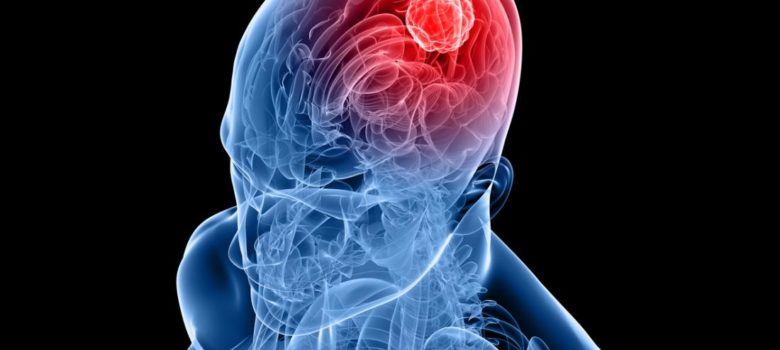

Innovations in Brain Tumor Surgery
by Zara Jethani
Named among the nation’s top neurology and neurosurgery centers, experts at Pacific Neuroscience Institute® (PNI) are at the forefront of research in the advancement of treatment and follow-up care.
We sat down with Daniel F. Kelly, MD, Co-Founder of PNI and a multiple recipient of the Southern California Super Doctors Distinction, to discuss innovations in brain surgery treatment.
What keeps you interested in neurosurgery?
Innovations in neurosurgery have not only improved patient outcomes but drastically changed the surgical field. For example, in the past 15 years alone, we have seen a shift from metastatic melanoma being the most common malignant brain tumor, to now being one of the least common due to targeted therapies and immunotherapies.
Do all brain tumors need surgery?
If a patient has a benign brain tumor, such as a meningioma, the treatment depends on the location of the tumor. One-third of meningiomas in people over 65 are benign and do not require surgery. A very common place for meningioma is in the midline skull base, which can cause vision loss. In these cases, the maximal safe removal for the preservation of all normal structures is endoscopic endonasal surgery through the nose, or a very small craniotomy through the eyebrow.
For malignant brain tumors, such as gliomas, glioblastoma, or metastases arising from cancer somewhere else in the body, surgery is often just the beginning of treatment. Patients may undergo radiation, chemotherapy, and immunotherapy. In these cases, the illness may be terminal.
What is gravity-assisted keyhole surgery?
Gravity-assisted keyhole surgery uses gravity to allow the brain to fall away from the skull to create space for endoscopic surgery to remove the tumor without retracting the brain. This option minimizes collateral damage and is a safe alternative to a retractor, which can hurt the brain’s soft structure.

We look at their scans together, show them where the tumor is, where the pituitary gland is, and how we’re going to do the surgery with Chester Griffiths, MD, Director of the PNI’s Pacific Eye, Ear, & Skull Base Center, and myself; how we strive to remove all the tumor and save the normal pituitary gland; and how we perform an elaborate protocol called reconstruction to prevent post-operative spinal fluid leak. At PNI, the rate of postoperative spinal fluid leak is very low, at about 1% in our cases.
After surgery, most patients go home the next day, are driving within 10 days, and can resume their full scope of pre-operative activities within 3 weeks. There is also an extensive follow-up to monitor hormone levels.

What is fiber tractography or DTI?
Fiber tractography, or DTI, allows surgeons to pinpoint the safest trajectory for biopsy or tumor removal by looking at the fiber tracks in the brain from an MRI.
What is connectomics?
Connectomics is a newer field for determining the safest trajectory for intra-axial brain tumors, such as glioma or metastasis. Connectomics allows surgeons to look at neural networks to see how the brain relates to itself with the goal of determining the potential downsides of taking one trajectory over another by potentially disrupting a network that would have significant effects on a patient’s personality, for example. Connectomics is also changing the way psychiatry is perceived for some psychiatric disorders.
Is there a cure for glioblastoma?
There is currently no cure for glioblastoma. Glioblastoma is a complex, tricky tumor with many subtypes. The average lifespan is 18 months to two years. Treatment for glioblastoma involves using combinations of standard chemotherapy and radiation preceded by maximal safe removal surgery. At PNI, Santosh Kesari, MD, PhD, and our group of expert neuro-oncologists are currently examining the benefits of immunotherapy before radiation, as well as post-operative radiation.
Can psychedelic-assisted therapy improve brain tumor care?

One of our most recent terrains of discovery in neurosciences is the exploration of psychedelic-assisted therapy for ruminative disorders, including grief, anxiety, and depression arising from a brain tumor diagnosis, for example. Ruminative disorders are what happens when the brain gets stuck in a loop. To break this cycle, serotonin agonists, such as psilocybin and LSD, act to loosen the brain’s ego, or default network, to overcome these disorders.
At PNI’s Treatment & Research In Psychedelics (TRIP) program, data from one large clinical trial on the use of psilocybin for addiction is currently being analyzed and offers promising insight into the future of psychedelic-assisted therapy for behavioral disorders and mental anguish.
Meet Dr. Kelly

Dr. Daniel Kelly, a board-certified neurosurgeon, is the Director and one of the founders of the Pacific Neuroscience Institute, Director of the Pacific Brain Tumor Center and Pacific Pituitary Disorders Center, and is Professor of Neurosurgery at Saint John’s Cancer Institute at Providence Saint John’s Health Center.
More Information
310-582-7450 | PacificBrainTumor.org
Related Links
About the Author

Zara Jethani
Zara is the marketing director at Pacific Neuroscience Institute. Her background is in molecular genetics research and healthcare marketing. In addition, she is a graphic designer with more than 20 years experience in the healthcare, education and entertainment industries.
Last updated: July 21st, 2023
